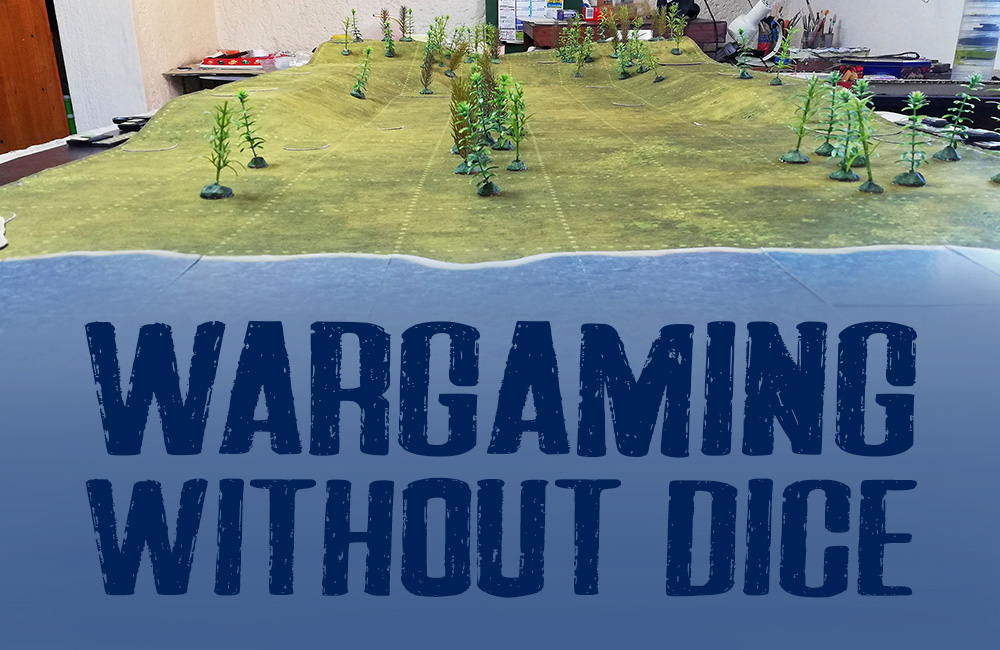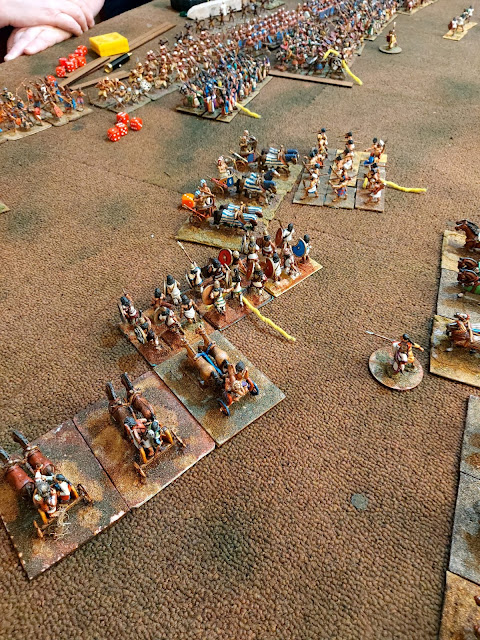Battlelines never wheeled as battlelines. At any point in history. Ever.
So how did lines change orientation? I did a YouTube video on this topic some time ago (on my Ancient Armies channel that I have neglected and really need to resurrect). Undrilled infantry lines like Gallic or British warband simply didn't change orientation. Once they formed up in a line facing their opponent they advanced pretty much straight ahead to engage the enemy. That was it.
Infantry of course could turn as a mob to face left or right but in that case they abandoned their formation and would henceforward fight at a distinct disadvantage. I allow this in Optio and there are cases where turning left or right as a line - and becoming disordered in consequence - is a necessity, but it's the exception, not the rule.
For drilled armies moving in any direction except straight ahead (which perhaps some diagonal movement to the right or left) was done using battle columns. A battle column was a line composed of roughly square-shaped subunits: the 16x16 Syntagma in the Macedonian and Successor armies, the +/- 8x8 Pentecosty in the Spartan army, and the +/- 8x8 Century in the Roman legion.
These subunits wheeled individually when in line to form an instant column that was as wide as the line had been deep. The column then marched, executing 90 degree wheels as necessary, until it reached its new position where the subunits each wheeled 90 degrees to reform an instant line again. This was pretty much the limit of battlefield manoeuvrability for any troop type in Antiquity and in any era for that matter.
In Optio I replicate this using the column mechanism. Each unit occupies a battlefield square, so making them form a column by turning right or left is easy. Columns, unlike lines, can wheel in 90 degree increments, one unit following the other, without a problem. The unit doesn't become disordered.
A square grid in my opinion is the best arrangement for replicating the actual movement and manoeuvres of pre-gunpowder armies. They are also ideal for replicating another reality of pre-gunpowder warfare - the fact that battlelines were never at an angle to each other. This kind of thing just didn't happen:
Columns can move much faster than lines since it's easier for troops to keep order in a column than in a line and a column can work around terrain obstacles. Hence I allow columns to double-move.
Columns however are not a combat formation - unlike the Napoleonic column - so they can't charge and if they're charged they do very badly. I allow columns to double-move even in close proximity to enemy units, but a column that double-moves cannot form line again in the same turn and if charged by any nearby enemy units in line it comes unstuck, fast. So columns need to be used with discretion.



Having given a lot of thought to how triremes fought, I see a very strong parallel there to your position that lines abreast did not wheel. Stay in a short file as the battle line orients towards the enemy then deploy out into line, likely with a single rank of ships. Xenophon's description of how the Spartans deployed out of a column into a fighting line, "just like triremes" seems strong support for your position - from that era.
ReplyDeleteCheers, Andrew
Thanks Andrew. I'm not familiar with trireme manoeuvres but it does sound pretty much the same thing. Spmeone on The Wargamers' Website quoted a Confederate army manual which had this passage:
ReplyDelete"“378. Wheeling on a fixed pivot takes place in passing a corps from the order in battle [i.e. battleline] to the order in column, or from the latter to the former.”
https://www.thewargameswebsite.com/forums/topic/the-battle-column/
Nice to see that Johnny Reb agrees with me.
I'm with you on the column and turn rather than wheel - one of the reasons To the Strongest appealed to me so much.
ReplyDeleteThanks Rob. :-) Obviously wargamers are going to use wheeling lines (and dice) until the Second Coming, but I would propose that using battle columns and lines that can't wheel does pose interesting challenges and solutions. Since battlefield squares are so large and columns can double-move, they get around hellish fast, but I've had quite a few games where a column that wanders too close to an enemy unit in line becomes tragically unstuck. They really have to be used with caution.
ReplyDelete